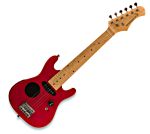In this weekly series titled JUST ASK, we invite readers to send in questions on stock investing, and personal finance. We will ask an expert (or experts) to provide answers. Below is a question from a reader which is answered by Musicwhiz, a value investor and popular blogger, and Ernest Lim, a CFA charter holder and a CPA.

Reader: Should we avoid S-chips entirely?
I know that some S-chips are trading at very cheap valuations - but the risk is real that some of these stocks may sink to the bottom one day because the companies' financial reporting is, well, dubious.

Dear reader, I sold out of my last S-chip when I divested China Fishery recently. I used to own Pacific Andes as well, but they are actually one and the same family, being under the umbrella of Pacific Andes International Holdings Limited listed in Hong Kong (under the Ng family).
I guess you cannot strictly call them S-chips as they are domiciled in Hong Kong, but then the bulk of their revenues come from China, and China Fishery happens to have the word "China" in it!
If you dig further back into my blog, you will find that I used to own a company called C&O Pharmaceutical as well before my value investing days. I divested it at a loss. One of my posts talks about the holdings I used to have since Day 1 of my investing journey.
Personally, I believe it's a governance issue with S-chips. Initially, the problem was that I cannot talk and meet with the management and see their business operations in Singapore, which makes it tough to assess.
Normally, I will also want to observe a company for some time to see how it handles crisis as well as recessions.
Most of the S-chips were listed at a time of bullishness in 2006 and 2007; and companies like Fibrechem and Celestial were making huge profits but I understood that those were good times. Plus, I didn't understand the industries and competitive forces surrounding these companies.
China is such a large country and it is not inconceivable for larger players to be present, whether listed or unlisted. Some of the profit figures and projections sounded a little too ridiculously optimistic to me (some still do!).
I am commenting from the point of view of a retail investor (not a savvy one - haha). The S-chips' cheap valuations are a result of the risk of something going wrong, and also because of a crisis of confidence.
With the high number of S-chips falling prey to scandals, it is hard to differentiate the good from the bad. For China Milk, the profit and loss itself looks dubious with the"Fair Value" figure in there, and this is similar to (ahem!) Oceanus as well as Guangzhao IFB (before the lattter was suspended).
Musicwhiz's current portfolio
|
Being accounting trained, I can never reconcile such fair value adjustments to REAL profit, and so to me this is ephemeral and I cannot get a handle on the actual profitability of the company. So, my simple solution is to AVOID them.
Also, in the case of China Milk, why did it raise so much cash through convertible bonds when its balance sheet already had a load of cash? This is inexplicable to me.
I am not trying to tar all S-chips with the same dirty brush.
In fact some like China Hongxing are paying dividends with the cash hoard they have, while others like Midas are doing respectably well.
But the competitive forces mean they cannot trade at high valuations (unlike in Hong Kong) and the size and scale of their activities are drawfed by their larger competitors.
By contrast, the companies I prefer in Singapore like MTQ and Kingsmen Creatives have quite a reputation within Southeast Asia and can hold their own against Asian competitors. They also have a track record spanning decades.
- Musicwhiz is a 30-something investor who has been investing for about 5 years in the Singapore stock market. He practices value investing and does his own research into potential companies to invest in. He posts regularly on NextInsight's forum, and writes regularly on his blog http://sgmusicwhiz.blogspot.com/
 Ernest Lim, CPA. CFA
Ernest Lim, CPA. CFA
Dear reader: I own some S chips such as Sinotel Technologies and Techcomp Holdings.
I believe what interests me is their profitable business model, strong earnings potential, excellent industry and economy outlook, and cheap valuation.
Nevertheless, I am also cognisant of the risks involved. In my opinion, there are two main aspects to risk. The first risk is the market risk - i.e. the daily gyrations of the stock market price which is uncontrollable. The second risk is the company risk which can be reduced to a minimum.
To reduce the second risk, one has to:
a) Devote time to understand the economy, industry, company, competitor;
b) Build up competency by reading widely on fundamental analysis, technical analysis, portfolio construction, risk management techniques, attending investment seminars etc.;
c) Attend AGMs, results briefing and talk to the management or/and analysts whenever possible.
d) Do call up your broker to enquire whether there are any rumours on the companies.

This is because rumours are built on fear or hope on certain aspects of the company which is a good indicator for you to do more in depth analysis on those areas.
For example, if you have asked your brokers on Celestial a few months ago, it is likely that there are rumours that it may have some problem refinancing its convertible bonds.
This would have given you an idea to research more on its convertible bonds and formulate an independent decision on whether Celestial is likely to have problem to finance its convertible bonds;
Lastly, for investors, do be aware of this “availability bias” which refers to events which are readily “available” in your memory which we will naturally presume that such events are commonplace.
This means that although there will be some black sheep among S chips, it is unwise to view all S chips as poor investments. (pls refer to http://www.sharesinv.com/articles/2010/01/25/biases-investing/ for more details on availability bias and other biases in investing.)
In a nutshell, there are definitely some good investments in S chips, provided that one does his homework rigorously and consistently, so to reduce the second aspect of risk to a minimum degree.
Ernest Lim is an assistant treasury and investment manager. Prior to joining his present employer in 2009, he was with Legacy Capital Group Pte Ltd, a boutique asset management and private equity firm, as an investment manager since 2006. He received a Bachelor of Accountancy(Honours) from Nanyang Technological University in 2005. He is a Chartered Financial Analyst as well as a Certified Public Accountant Singapore.







